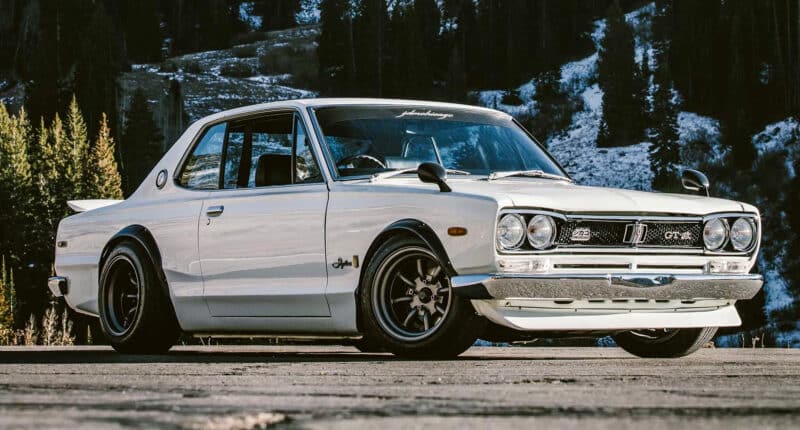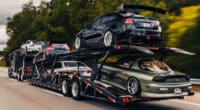Car enthusiasts are spoilt for choice when it comes to JDM wheels. Japanese wheel brands have churned out iconic designs for decades now, making it hard to decide which rims to buy.
In recent years, the old-school, classic JDM wheels have become increasingly popular, and we’ve seen prices skyrocket for certain versions.
In some cases, the vintage JDM wheels cost multiple times what you’d pay for a brand-new, mass-produced design. Then again, to a wheel connoisseur, the cool factor alone is probably worth the price.
In this article, we’ll take a closer look at some of the best JDM wheels, whether you prefer old-school classics or rare and expensive modern designs.
Our Favorite Modern JDM Wheels
There are so many cool JDM wheels out there, so it’s hard to pick just a few. However, we’ve narrowed down some of the best modern and classic options.
Some of these JDM wheels are a no-brainer and others may cause a heated debate in the comments. Let’s start with some of the best modern, race-style JDM wheels.
Volk Racing TE37
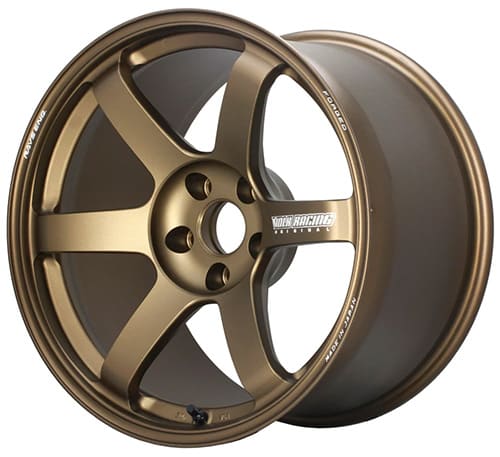
Construction: Forged
Material: Aluminum
Wheel style: Six-spoke
We may as well start with the most obvious one. The Volk TE37 is one of the most famous and desirable wheels ever made, so it certainly wouldn’t make sense to make a list like this without it.
Its name isn’t random either, it’s called 37 because the first model was a 3.7 kg 15-inch version.
While the TE37 was first seen on some legendary JDM cars, it would soon find its way under the arches of cars from all around the world — and the TE37 looks just as good on a Ford Fiesta as it does on a Toyota Supra.

The TE37’s design is simple but that’s also what makes it so great.
Being a forged wheel with 6 sturdy, flat spokes makes it much lighter than it looks while remaining super strong. No wonder it’s being used on both stance cars and different types of race cars.
Unlike many other manufacturers, Volk offers a bunch of different variations of the TE37, so there’s bound to be a version of these 6-spoke JDM wheels that suits your build.
Enkei RPF1
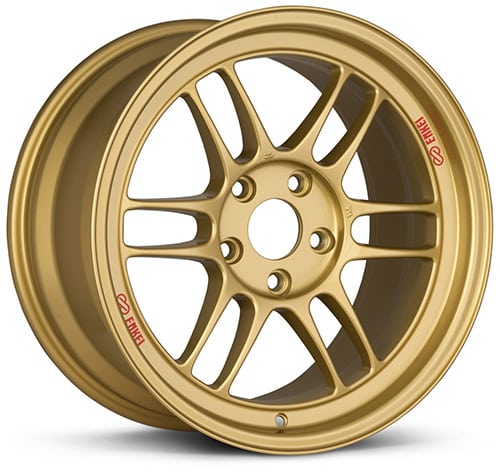
Construction: Cast one-piece
Material: Aluminum
Wheel style: dual 6-spoke
The Enkei RPF1 can be said to be something of a Formula 1 replica wheel. Enkei has a longstanding relationship with the McLaren F1 team as their official wheel supplier.
Enkei used the same F1 race wheel technology when they developed their now-iconic RPF1 wheel, so while it does look pretty, it’s also a solid choice for track cars.
The dual open spoke design is one of the things you can spot on the RPF1 that’s derived from the wheels used in the pinnacle of motorsport.
These spokes were designed to achieve better stress dispersion in curves, during hard braking, and in extreme race driving conditions, so the RPF1 should be more than capable of handling whatever your daily driver can throw at them.

In addition, the pocket design around the bolt circles is there to increase rigidity and keep the wheel cooler during track sessions.
To top it all off, Enkei developed a new manufacturing process that it uses in the production of the RPF1 wheel.
It’s called M.A.T, or Most Advanced Technology, and combines one-piece cast wheel technology with a rim-forming technology called spinning process.
Thanks to this process, the RPF1 is 10-15% lighter, yet stronger than other wheels, and we all know how important it is to reduce unsprung weight.
Work Meister S1
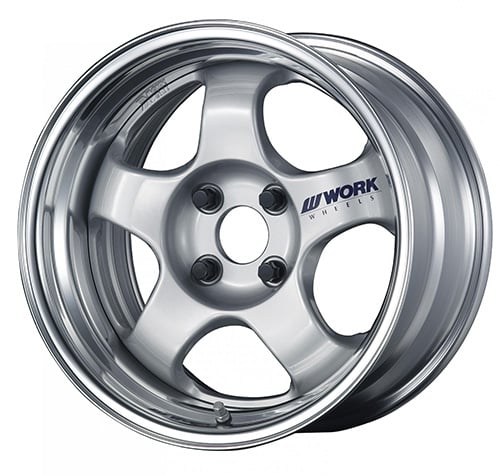
Construction: Multi-piece
Material: Aluminum
Wheel style: 5-spoke
Work Wheels is often regarded as the leading manufacturer of single and multi-piece forged wheels.
The Work Meister S1 is a 5-spoke multi-piece wheel that will look stunning on whatever car you use it on.
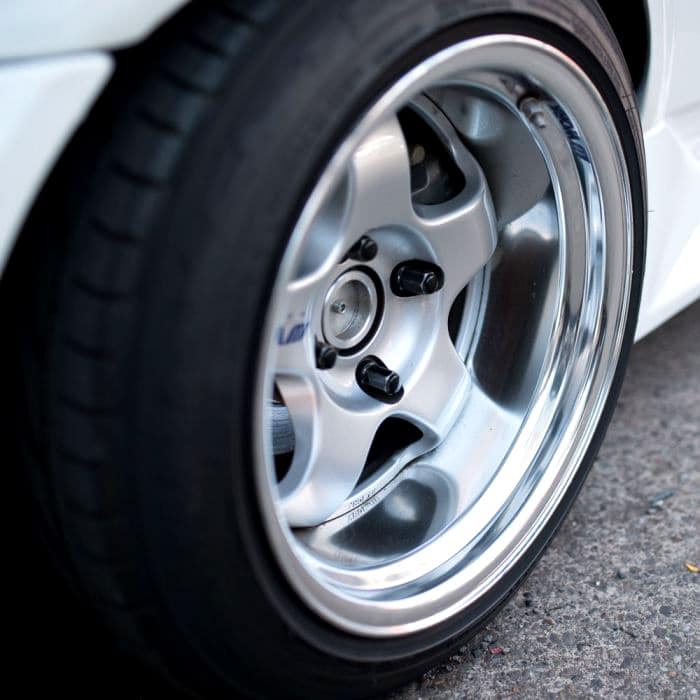
Here, Work went with wide, curved spokes, and a fat lip, giving the Meister S1 a very muscular look — perfect for Nissan Skylines and Z cars, but the look still works on small hatchbacks and larger sedans.
In short, you might say it’s a Meisterpiece (bad pun totally intended!).
Volk CE28N

Construction: Forged
Material: Aluminum
Wheel style: 10-spoke
The CE28’s 10-spoke design looks exactly like something one would expect to find on a race car, and there’s a reason for that.
This wheel looks particularly good on Japanese cars where the owner is trying to implement a motorsport style. The spokes have a slight curve and then abruptly dive back in towards the wheel lip.
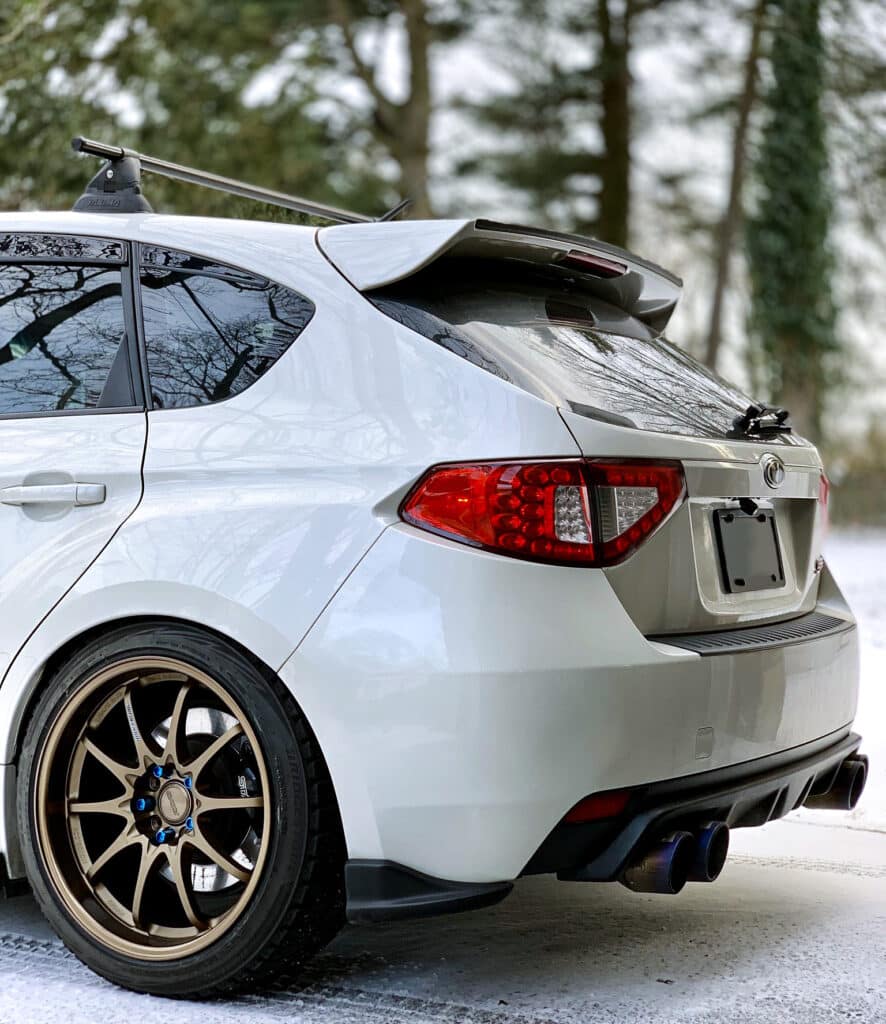
The Volk CE28N is kind of an improved version of the popular TE37. Volk added more spokes for increased rigidity, yet they still managed to reduce its weight.
Its name, CE28, is a hint to that, as it stands for Competition Expert 2.8 kg. Clearly, Volk wasn’t messing about here, as this is the lightest wheel in their lineup.
Buddy Club P1 Racing SF

Construction: Cast
Material: Aluminum
Wheel style: 6-spoke
Mitoshi Kakimoto, a former Formula 3 driver, founded Buddy Club back in the 1990s, with a goal of producing world-class high-performance car parts.
The Buddy Club P1 Racing SF wheel is a direct result of this, as it’s a cast version of their famous QF forged wheel, which was developed for race use.

The P-1 Racing SF, while not quite as special as the QF, it’s still very strong and lightweight, and these 6-spoke JDM wheels are a great option for both road and track use thanks to their racing DNA.
Spoon SW388

Construction: Forged
Material: Aluminum
Wheel style: 5-spoke
The Spoon SW388 is one of the most sought-after 90s JDM wheels among Honda enthusiasts, and there’s a good reason for that.
In 1994, Spoon, in partnership with Desmond Corporation, began developing the World’s lightest aluminum wheel, and 2 years later, in 1996, the 15-inch SW388 was released.
It weighed in at a mere 3.88 kg, and that’s where the name came from — Spoon Wheel 3.88 kg, or SW388.
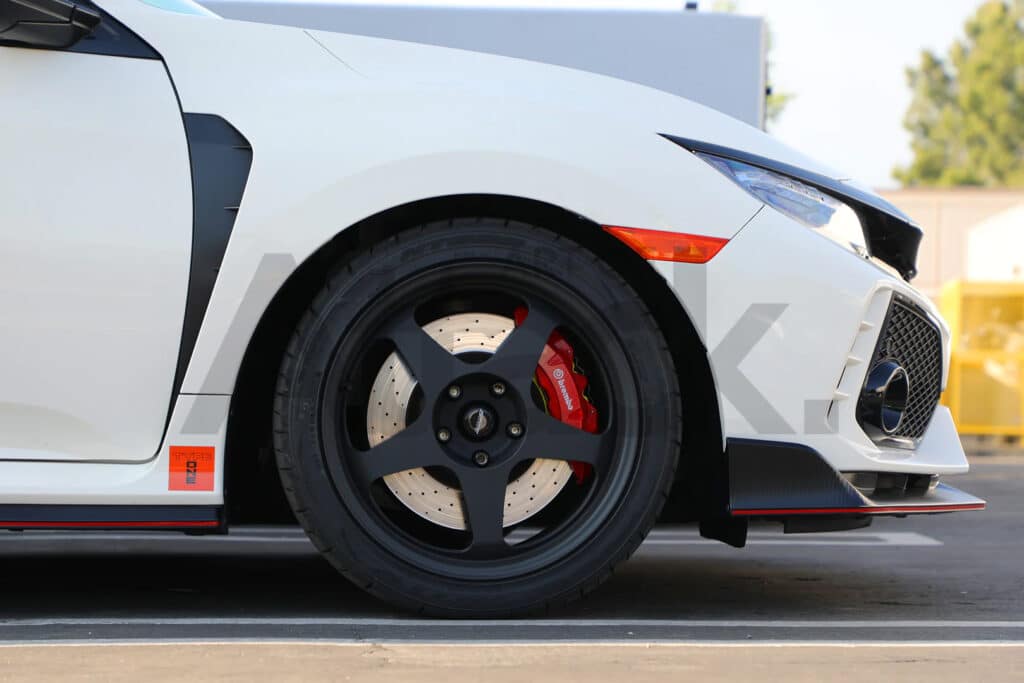
Spoon stopped the production of the SW388 in 1999 but later brought it back in a revised form that takes strength, weight, aftermarket caliper clearance, and modern sizes/specs into consideration.
Spoon even worked with the original SW388 designer, and used the original technical drawings from 1994 for the remake. This means the new version stays true to the original’s style, but is far superior in every way.
NISMO LM GT Series
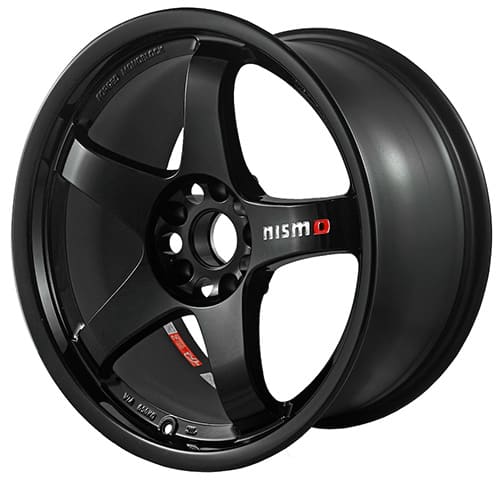
Construction: forged 1-piece, or multi-piece
Material: Aluminum, magnesium
Wheel style: 5-spoke
As the name implies, the NISMO LM GT series of wheels were made for Nissan vehicles.
They first entered production in the 1990s, and while there have been multiple generations and variations over the years, it’s still among the most exclusive ’90s JDM wheels — although, it did enter production in the late ’90s.
There’s a numbered series that ranges from LM GT1 to LM GT4, and there’s the LM GT MAG, which is obviously made from magnesium alloy.
The LM GT wheels all share a similar design — they’re all 5-spoke rims JDM enthusiasts can spend hours staring at. However, there are some major differences as well.
The LM GT1 is a 3-piece wheel, while the LM GT2 and LM GT3 are 2-piece wheels, and the LM GT4 is a forged 1-piece wheel.
The LM GT MAG is also a 1-piece wheel, and it was made specifically for the R33 and R34 Nissan Skyline GT-R. As you may have guessed already, being a magnesium wheel, it was pricey, and you will probably never see one for sale.
SSR Professor SP1

Construction: Multi-piece
Material: Aluminum
Wheel style: 5-spoke
The SSR Professor SP1 is a multi-piece 5-spoke wheel that offers a truly one-of-a-kind look thanks to its partially exposed hardware.
If, for some reason, you feel the SSR Professor SP1 isn’t unique enough, SSR offers virtually endless customization options, from width and offset to color and finish, thanks to its 3-piece design.

SSR is known for its lightweight motorsport wheels, and the Professor SP1 stays true to that formula.
Blitz Type 03
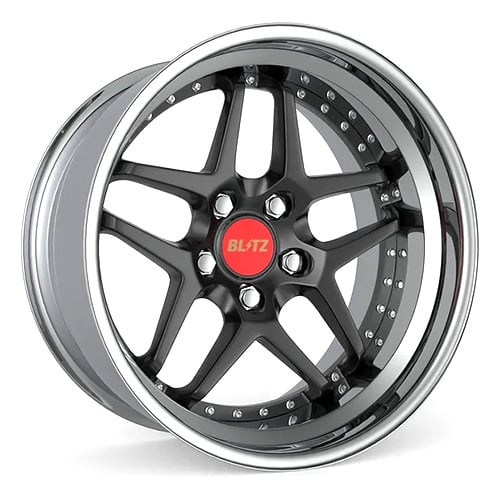
Construction: Forged
Material: Aluminum
Wheel style: open 5-spoke
The Blitz Type 03 is one of the rare JDM wheels it seems everyone and their dog is trying to get their hands on and it’s easy to see why they’ve been hyped up.
First of all, they’re discontinued, so that automatically makes them more attractive and sought after, but also, the design is truly attractive and will suit almost any car.
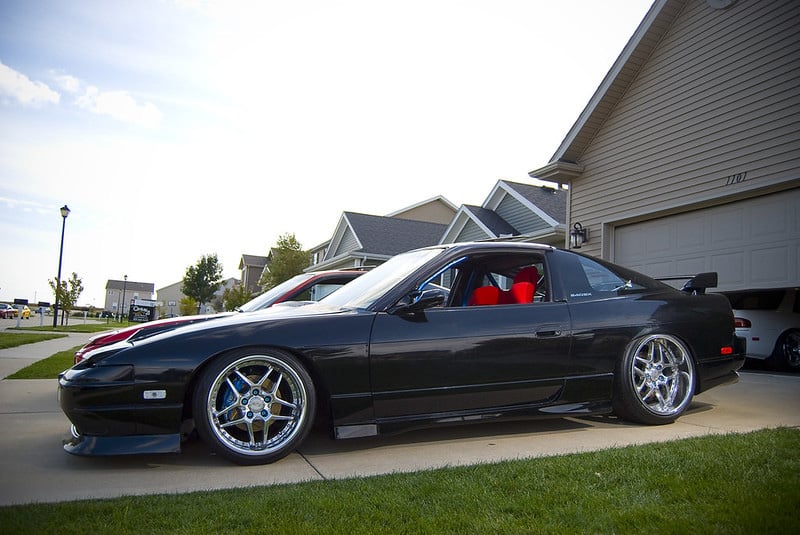
The Blitz Type 03 has an aggressive split 5-spoke design with gently curved spokes that abruptly slash down towards the barrel.
Good luck getting your hands on a set, though, as you’ll most likely have to start a bidding war with a bunch of JDM fanatics.
Work VS-XX

Construction: Multi-piece
Material: Aluminum
Wheel style: Mesh
Work wheels arrived on the scene in the late 1970s, and since then, the company has grown into one of the most famous Japanese wheel brands.
The Work VS-XX is a multi-piece rim that will look good on pretty much any car, new or old, JDM or European.
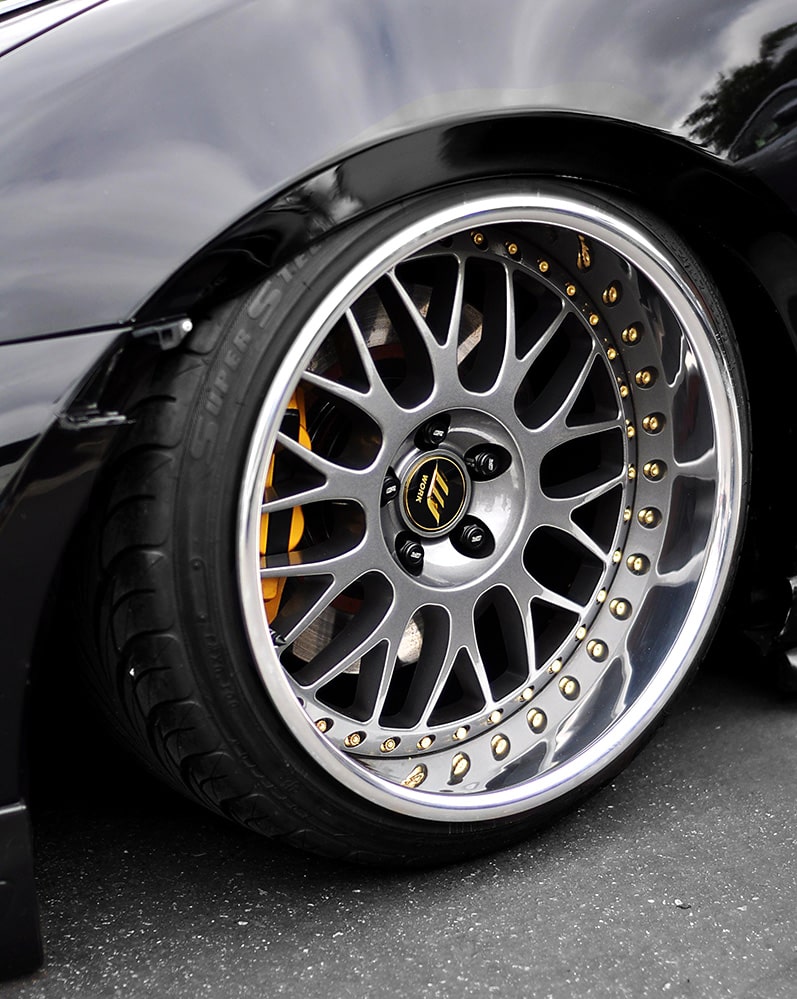
Timeless designs like this, featuring a mesh face combined with either a step or reverse lip, ensure that your car will still look good 10 years from now.
There’s a reason why Work wheels seem to be present at pretty much every car meet, no matter how small and local.
Traditional JDM Rims for Retro Builds
If you’re in the market for something more classic — think 80s JDM — then the following monoblock and multi-piece wheels will interest you.
Some of these wheel designs are considered the holy grail for Kyusha JDM builds. They’re not the easiest or cheapest to get your hands on, but that’s what makes them so great.
Takechi Project Racing Hart FR

Construction: Cast
Material: Aluminum
Wheel style: 4 or 5-spoke
The classic Takechi Project Racing Hart wheel was available in 4-spoke and 5-spoke designs.
The 4-spoke versions were 4-lug JDM wheels, so they figured it would make perfect sense that the JDM rim’s 5-lug version had five spokes.
The 4-spoke Racing Hart FR wheels are the most popular ones, perhaps because a lot of JDM cars featured a four-bolt pattern back in the 1980s and 90s.
4-spoke versions were only available in 14 and 15-inch diameters, but they offered a ton of different widths, ranging from a mere 6.5 inches to a whopping 13 inches.
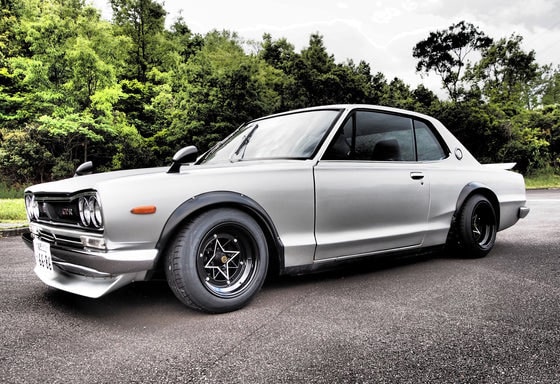
The 5-spoke model wasn’t available with such varied width sizing options, again, most likely due to most cars using a four-bolt configuration back then.
Various companies have made reproductions and replicas of the 4-spoke Takechi Project Racing Hart FR 4H vintage JDM wheels over the years, but the 5-spoke version doesn’t seem to have been cloned — at least not to the same degree.
Oddly, the 4-spoke JDM wheels have always been the most desirable, even though the 5-spoke version is much rarer.
RS Watanabe 8-Spoke
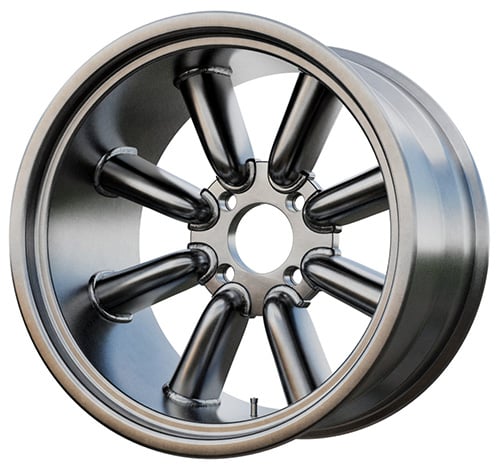
Construction: Cast
Material: Aluminum
Wheel style: 8-spoke
The 8-spoke RS Watanabe must be one of the most iconic wheel designs ever!
Eagle-eyed readers have probably spotted some similarities between these and the Minilite wheels — both manufacturers claim they were the first to produce the “banana spoke” wheel.
Whether RS Watanabe wheels were first or not doesn’t matter, as there’s no debating that these old-school JDM wheels have been around for ages and still look amazing today.
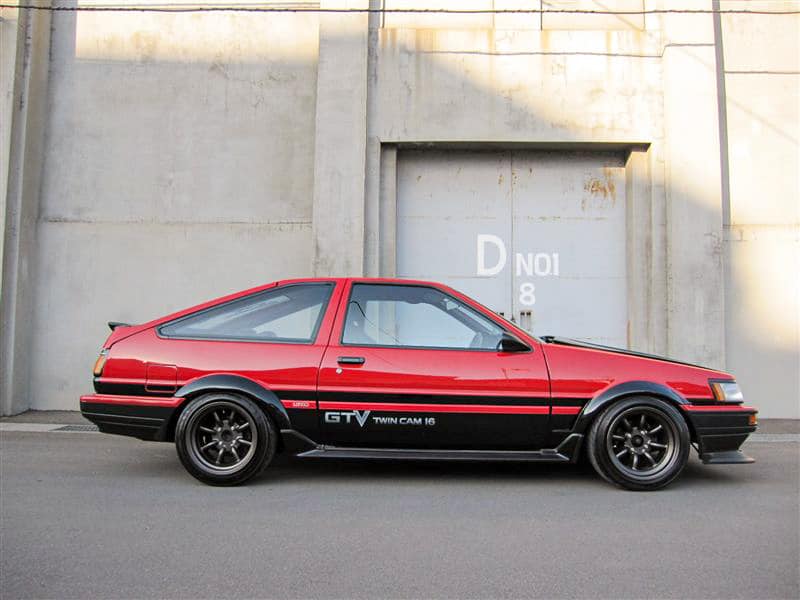
In fact, the eight-spoke RS Watanabe wheels were used on Japanese racetracks long before the Government’s JWL standard for road wheels came about in 1968, and the cast wheels crushed it with their superior strength and low weight.
Over the years, it’s been offered in various dimensions, and just like most iconic JDM wheels, they tend to cost a pretty penny. If you own a classic car, they’ll look so right, it’s probably worth the cost, though.
Hayashi Racing Street

Construction: Cast
Material: Aluminum
Wheel style: 8-spoke
The Hayashi Racing Street wheel has literally been around for a lifetime — it first entered production in 1969.
It has seen some subtle changes over the years, but the design and finish of this cast wheel remain the same — which just proves how cool and ahead of its time the original was.
The smallest diameter available is just 10 inches which is perfect for old kei cars, JDM pickup Trucks, and perhaps an old Mini Cooper.

Originally, the Hayashi Racing Street was only available in 10, 13, and 14-inch diameters, but in modern times, they’ve even been available in 17 inches.
They are also available with bolt patterns and offsets to match pretty much any car, and these days, the Street has become a whole line-up of wheels with alphabetical sub-models designating various fitments.
There are cheap knockoffs out there, but seeing as the Hayashi Racing Street has been in production for over 5 decades, finding an original set for your Kyusha, Shakotan or Zokusha build shouldn’t be a huge problem.
SSR Star Shark
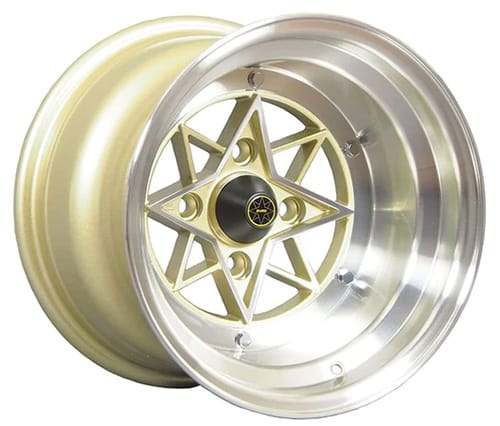
Construction: 3-piece
Material: Aluminum
Wheel style: Star-shaped 8-spoke
SSR, or Speed Star Racing as they were originally called, claims to be the maker of the first 3-piece wheel — the MK1.
However, the company has been around since 1971, and there are images of BMWs running 3-piece Albert wheels in what’s believed to be the late 1960s.
Anyway, there’s no denying that SSR is one of the OG JDM wheel brands, and the company has churned out some of the coolest JDM wheels we’ve ever seen.
One of those is the glorious SSR Star Shark — can you think of any 80s JDM wheels with a cooler name?
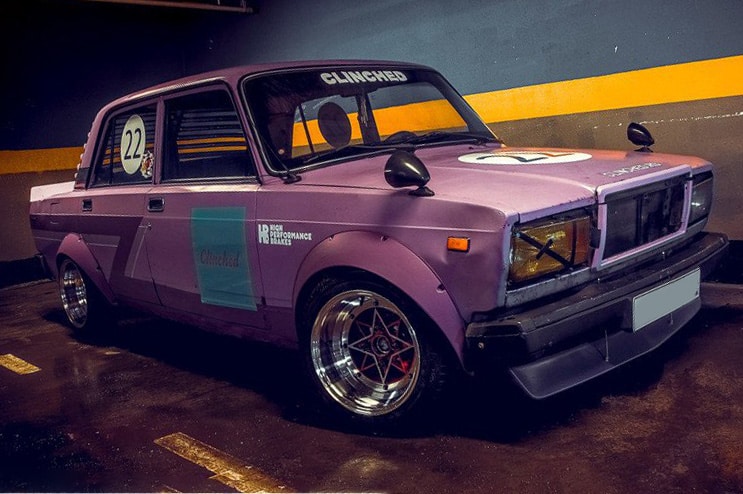
Its unique star design is perfect for any old-school car, whether it’s JDM or not. The Star Shark was available with awesome finishes that overshadowed most wheels from that era, such as red, gold, black, and purple wheel centers.
That’s probably the main reason why these wheels are extremely sought-after today, and if you find one, it’ll most likely cost an arm and a leg.
There are knockoffs available if you don’t want to remortgage the house, but they do lack some of that cool factor.
Suzuka Longchamp XR-4
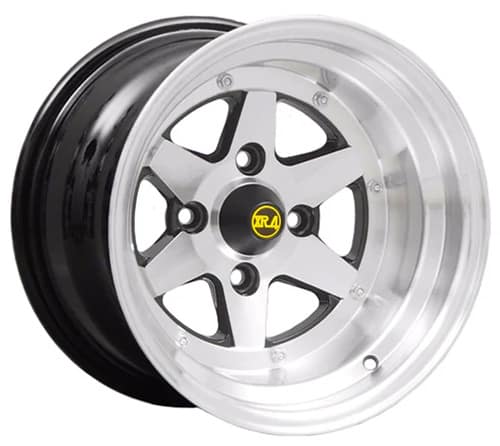
Construction: Cast 1-piece. Old: 3-piece
Material: Aluminum
Wheel style: 5 or 6-spoke
The Suzuka Longchamp XR-4 is one of the most iconic 80s JDM wheels out there. Designed by a company called Suzuka Sangyo, they were actually made by SSR, and remained in production into the 2000s.
In fact, this wheel is kind of still in production today, but it’s no longer made by SSR and is now a cast 1-piece wheel made to look like a 3-piece using fake hardware.
If you only want the looks, go for it, but be prepared for purists and wheel snobs turning their noses up at you.
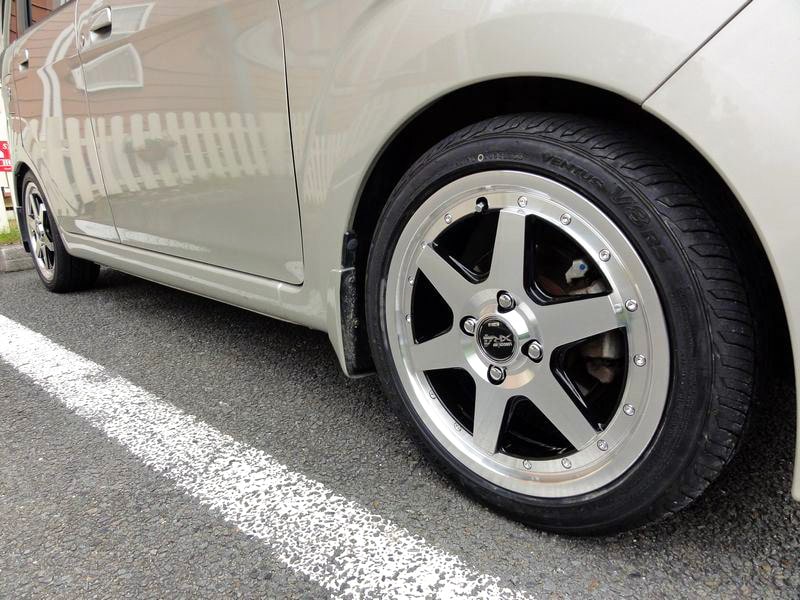
Also, having been in production for so long, it shouldn’t be impossible to source a somewhat reasonably priced set from Japan.
The original Longchamp XR-4 was offered in a vast range of sizes, starting at just 12 inches. 16s were available for a limited time as well. They also featured other upgrade options, such as choice of color and finish.
The 5-hole PCD version had 5 spokes, whereas the 4-hole one had six spokes. Either way, the Longchamp XR-4 is an excellent choice if you’re working on a retro JDM build.
SSR Formula Mesh

Construction: Multi-piece
Material: Aluminum
Wheel style: Mesh
Some would say classic JDM wheels, such as the SSR Formula Mesh, look best on classic cars, but we think this iconic design is timeless and can complement modern cars just as well as vintage ones.
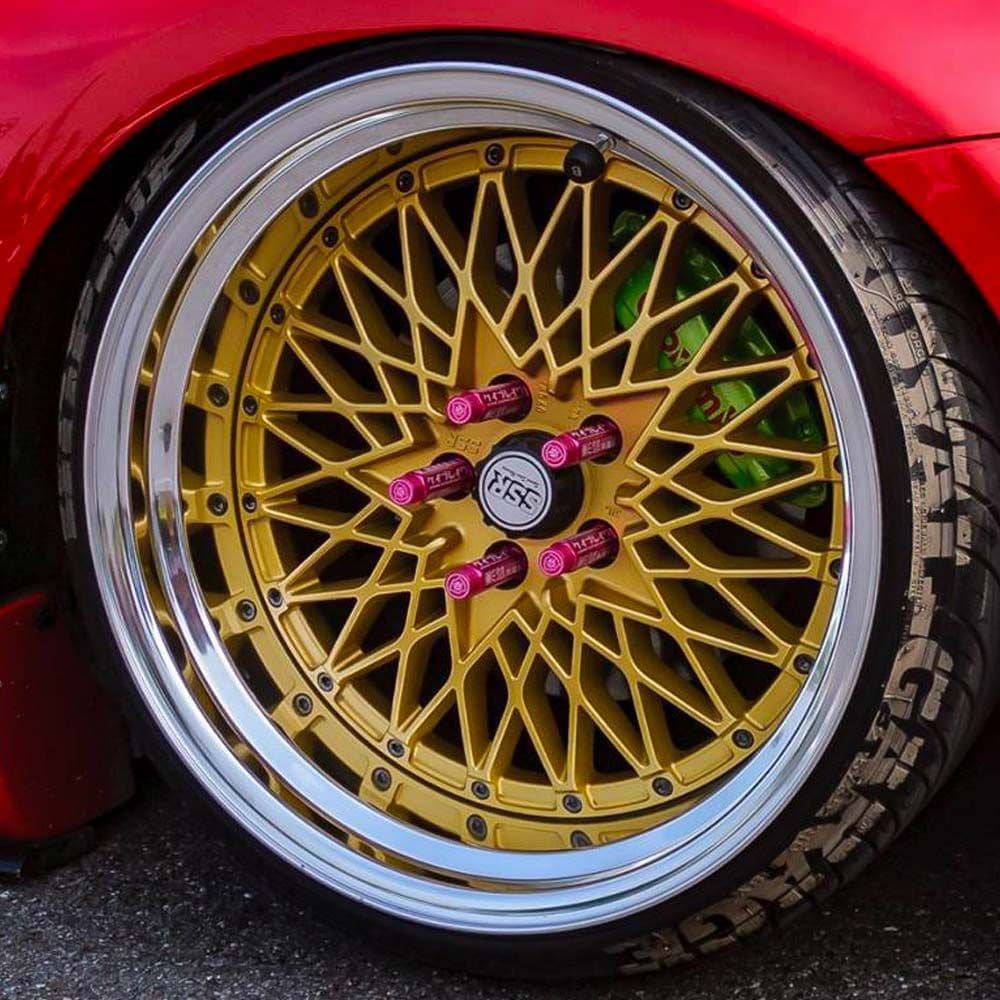
It should be noted that there’s a difference between buying a classic version of the Formula Mesh and a new one. The design remains true to the original, but the rims are re-engineered to adhere to modern standards and regulations.
The SSR Formula Mesh is available in sizes ranging from 16 to 19 inches — with the notable exception of a 17-inch rim. It’s also available in a wide selection of standard and custom colors, as well as a range of offsets to truly make your set unique.
Hayashi Racing Yayoi “Sakura”
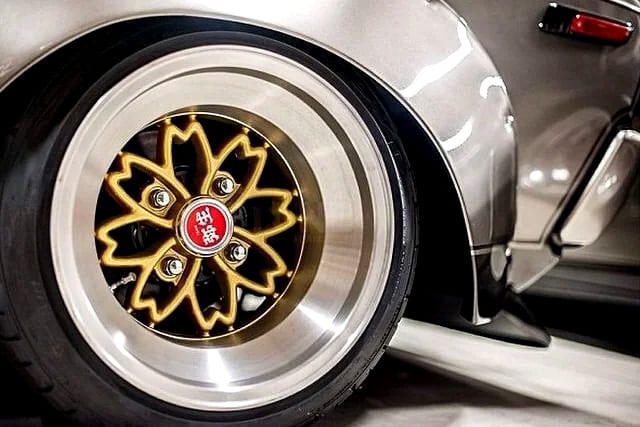
Construction: Cast
Material: Aluminum
Wheel style: Cherry blossom multi-spoke
The Hayashi Racing Yayoi “Sakura”, or cherry blossom rims, are among the most desirable and sought-after vintage JDM wheels.
They are essentially as Japanese as a wheel could ever be, blending craftsmanship, automotive heritage, and cherry blossoms, to create the ultimate automotive homage to Japanese culture.
These rare JDM wheels are characterized by a unique multi-spoke design that exudes elegance and precision, which is complemented by their light weight and strength.
Originals are as rare as hen’s teeth, and some sets have sold for well more than $10 grand. While purists may not approve, there are cheaper knock-offs out there that won’t require you to sell a kidney.
Concluding Summary

There’s a JDM wheel out there for everyone! It doesn’t matter whether you’re driving an old Japanese Bosozoku car or a brand-new German luxury sedan, there will be a JDM wheel that fits your car and makes it look better.
Unfortunately, with their increased popularity, we also get increased prices, with some of the rare JDM wheels selling for ridiculous money these days.
Do you have a cool set of JDM wheels on your car, or are you looking for some? Let us know in the comments below.
